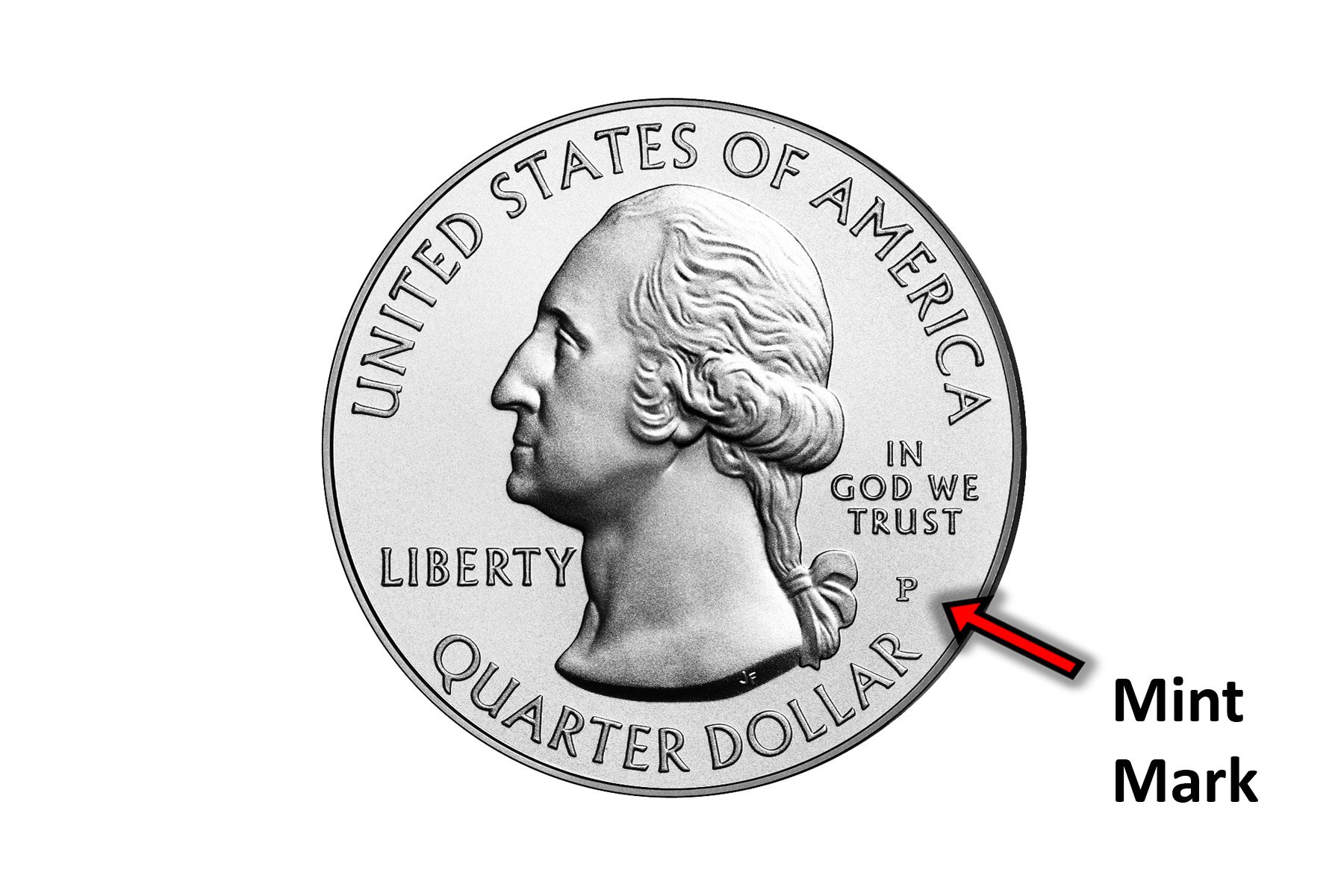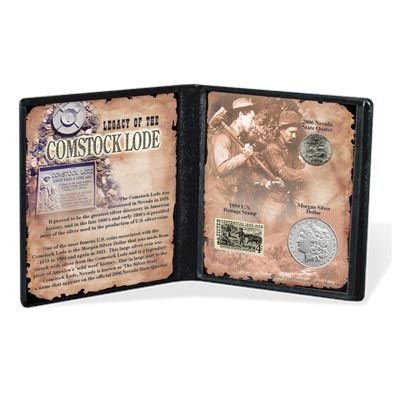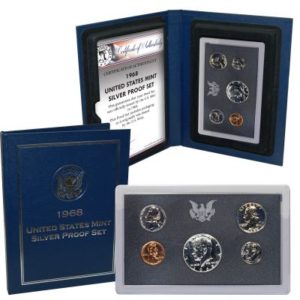A Mint mark is a small letter that designates where a coin was made. Mint marks have been used for thousands of years. Ancient Greeks and Romans used them on coins starting around the 3rd Century.
What was the original purpose of a mint mark?
Essentially, a mint mark was added to the coin to hold that Mint accountable for the quality, size, and weight of a coin. If a problem was found on a series of coins (for example, if the coins were found to be underweight), they could be traced back to the mint where they were made and hold those officials responsible.
Branches of the US Mint
In 1792, the United States Congress passed the Coinage Act, establishing the first national mint in the United States. The first mint branch was established in Philadelphia. Philadelphia was chosen as the first site because it was actually the site of the nation’s capital for a brief period, from 1790-1800 while Washington DC was being built. Since there was only one branch of the Mint, it was not necessary to use a mintmark. This practice of no mint mark continued on all coins minted in Philadelphia, with only one notable exception, (keep reading for more on this) until 1979. In 1979, the “P” mintmark appeared on the new Susan B. Anthony Dollar. A year later, the P Mint mark began to appear on all almost all coin denominations except for the penny.
Of course, there’s always an exception – in 2017, for the 225th Anniversary of the U.S. Mint, a P Mint mark appeared on the penny. The Mint did not announce it was making this exception, they just quietly released the coins into circulation. They were probably waiting to see if collectors would even notice – and they did. In 2018, the P Mint mark once again disappeared from the penny.
In the early 1800s, America experienced its first two gold rushes in North Carolina and Georgia. The Philadelphia Mint was strained to its limits to melt, refine, and produce coins from this gold. In 1835, Congress passed legislation to establish three new Mint branches: in Charlotte, NC; Dahlonega, GA; and New Orleans, LA.
Charlotte and Dahlonega produced gold coins exclusively, with the mint marks “C” and “D”, while New Orleans produced both gold and silver coins with the mint mark “O”. At the start of the Civil War, the Confederates took over these three mints and sporadically produced their own coins. In 1862, the U.S. regained control of these Mints, but the Dahlonega Mint in Georgia never re-opened.
In 1849, when Gold was discovered in California, a Mint branch was opened in San Francisco to convert the miners’ gold into coins. These coins bore the “S” Mint.
In 1862, Congress approved yet another Mint branch in Denver. A year later, the Denver branch opened as an assay office for miners to bring gold to be melted, assayed, and cast into bars. It did not mint any US coins until 1906. Coins produced at the Denver Mint, like these Denver Mint Peace Dollars, bore the “D” mintmark.
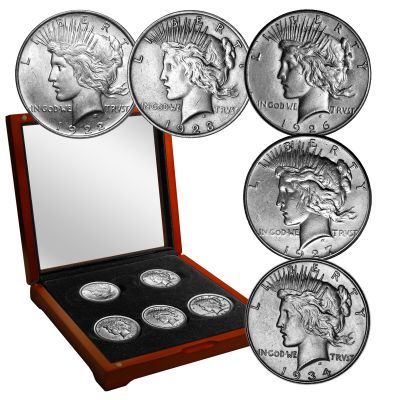
The country’s largest-ever silver ore discovery, the Comstock Lode, began in Nevada in 1859. Once again, Congress authorized a Mint branch in nearby Carson City, Nevada, which opened in 1870. As the silver ore in the Comstock Mine decreased, the “CC” mintmark disappeared when the last coin was struck in 1893.
The West Point Mint is located near the U.S. Military Academy in New York State; it became an official branch of the U.S. Mint in 1988. Prior to that, it produced the 1984 $10 Gold Olympics Commemorative coin, and the “W” appeared on the obverse of the coin, under the date.
In 1996, the U.S. Mint issued a special commemorative coin to mark the 50th anniversary of the Roosevelt Dime. The coin was a limited-edition Roosevelt Dime that was struck in Brilliant Uncirculated condition at the West Point Mint. It was included only in the official 1996 Mint Set from the U.S. Mint and none of the special 50th-anniversary coins were released into circulation. This was the first regular-issue U.S. coin to feature the “W” mint mark of the West Point Mint. In 1997, the West Point Mint struck the first American Eagle Platinum Bullion coins.
So there you have it, all eight locations of U.S. Mint branches:
- Philadelphia (PA) – Mintmark “P” – 1793 to date
- Charlotte (NC) – Mintmark “C” – 1838-1861
- Dahlonega (GA) – Mintmark “D” – 1838-1861
- New Orleans (LA) – Mintmark “O” – 1838-1861, 1879 to 1909
- San Francisco (CA) – Mintmark “S” – 1854 to 1955, 1968 to date
- Carson City (NV) – Mintmark “CC” – 1870-1893
- Denver (CO) – Mintmark “D” – 1906 to date
- West Point (NY) – Mint mark “W” – 1984 to date
The First P Mintmark
Earlier, I mentioned that prior to 1979 Philadelphia coins have no mint mark – with one exception. During WWII, there were a lot of “exceptions.” Steel cents, silver nickels, shell case pennies. Nickel was a valuable component in guns, tanks, and airplanes. Tons of nickel were also used every year in the manufacture of 5¢ Nickel coins. As a result, the U.S. Mint could endanger America’s war effort if it continued to use nickel in coinage – so the U.S. Mint made a dramatic change in 1942 by dropping nickel from the 5¢ Nickel coin. Instead, the Nickel was made with 35% silver – because the color was right and silver was actually less valuable than nickel at the time.
Silver Nickels were made from 1942 until the war ended in 1945. During this time, they were struck at all three U.S. Mints – Philadelphia, Denver, and San Francisco. In order to distinguish the Silver Nickels from the regular coins made with nickel, the U.S. Mint included prominent mint marks. Unlike the nickel coins, these coins have their mint marks on the reverse, above the dome of Monticello. A large “D” is for Denver, “S” is for San Francisco, and “P” is for Philadelphia. Prior to this series, no Philadelphia coins ever featured a Mint Mark.
Mintmark Locations
On rare occasions, the U.S. Mint changes the position of a coin’s mintmark. The original Jefferson Nickel featured the “D” (for Denver) or “S” (for San Francisco) mint mark on the reverse, to the right of Monticello. On the 1942-1945 war-time silver Jefferson Nickel, the mint mark was on the reverse, above Monticello, to identify the silver coin. In 1968, the position changed to the obverse, after the date. Other circulating coins besides the penny had the “D” or “S” mintmark on the reverse. In 1968, the position changed to the obverse, above the date.
Missing Mintmarks
Towards the end of the 1950s, we experienced a great coin shortage. Mint production could not keep up with the need for coins and some Federal Reserve Officials suggested that coin collectors and investors might be part of the problem. So, to make coins less “collectible”, they omitted the Mintmarks from coins struck in 1965, 1966, and 1967, and instead of issuing P and D Mint Sets offered Special Mint Sets. 1968 saw the return of mint marks on United States coinage and the standard Mint Set.
Mint Specialties
San Francisco – No “S” coins were minted from 1956-67. In 1968, the mint started producing coins with mint marks again. Proof sets were once again produced, with the production of proof coins being taken over by the San Francisco Mint. Most post-1968 proof coins feature the S mintmark.
Since 1975, San Francisco has only struck coins for collectors and investors, with the proof set being its main product (one major exception is the Susan B. Anthony dollar, produced 1979–1981, which were called “Business Strikes.”) The San Francisco Mint now produces most Proof coins and Silver Proof Coins.
West Point – In 2012, to encourage coin collecting, quarters were the first to bear the W Mint mark of the West Point Mint. In 2019, a penny featuring the W mint mark (indicating that it was minted at West Point Mint) was included in the mint set, this was the first time a penny featured the mintmark. In 2020, the same was done with the nickel.
The West Point Mint produces American Eagle proof and uncirculated coins in gold, silver, and platinum; American Buffalo gold bullion coins, and Commemorative Coins as authorized by Congress.
Periodically, the U.S. Mint will change things up – to either excite collectors or get more interest. Lately, they have been producing coins in atypical branches. For example, in 2017 the Mint offered a “Congratulations” Silver Eagle Dollar. Proof Silver Eagles are typically struck at the West Point Mint. Only 75,000 coins were struck at the San Francisco Mint for this special “Congratulations” Silver Eagle and it sold out in 2 minutes.
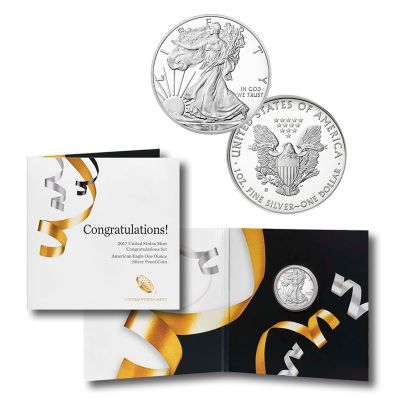
Currently, this is what you can expect:
Numismatic coins (Proof and Uncirculated finishes) are minted in Philadelphia (P), Denver (D), San Francisco (S), and West Point (W).
Bullion coins (Platinum, Gold, and Silver) have recently been minted at all facilities except Denver. Only numismatic products may be purchased directly from the US Mint.
Circulating-quality coins (as obtained in banks and retail establishments) are produced at Philadelphia and Denver facilities.
Production Figures
The United States Mint publishes Sales and Production figures broken down by Mint branch. As you would guess, the lower the Mintage, often the more valuable the coin. For National Coin Week in 2019, the U.S. Mint released two million of each of the five designs of that year’s America the Beautiful quarters bearing the “W” (West Point) mint mark into circulation. Even lower mintages occurred in 2012 when coins were not released into circulation. The Chaco Culture National Historical Park Quarter and the 2012 Acadia National Park Quarter have the lowest mintages of any quarter bearing the W mint mark to date.
So, it’s easy to see why mint marks matter – often they can make a coin more valuable, and some are just downright unique.

